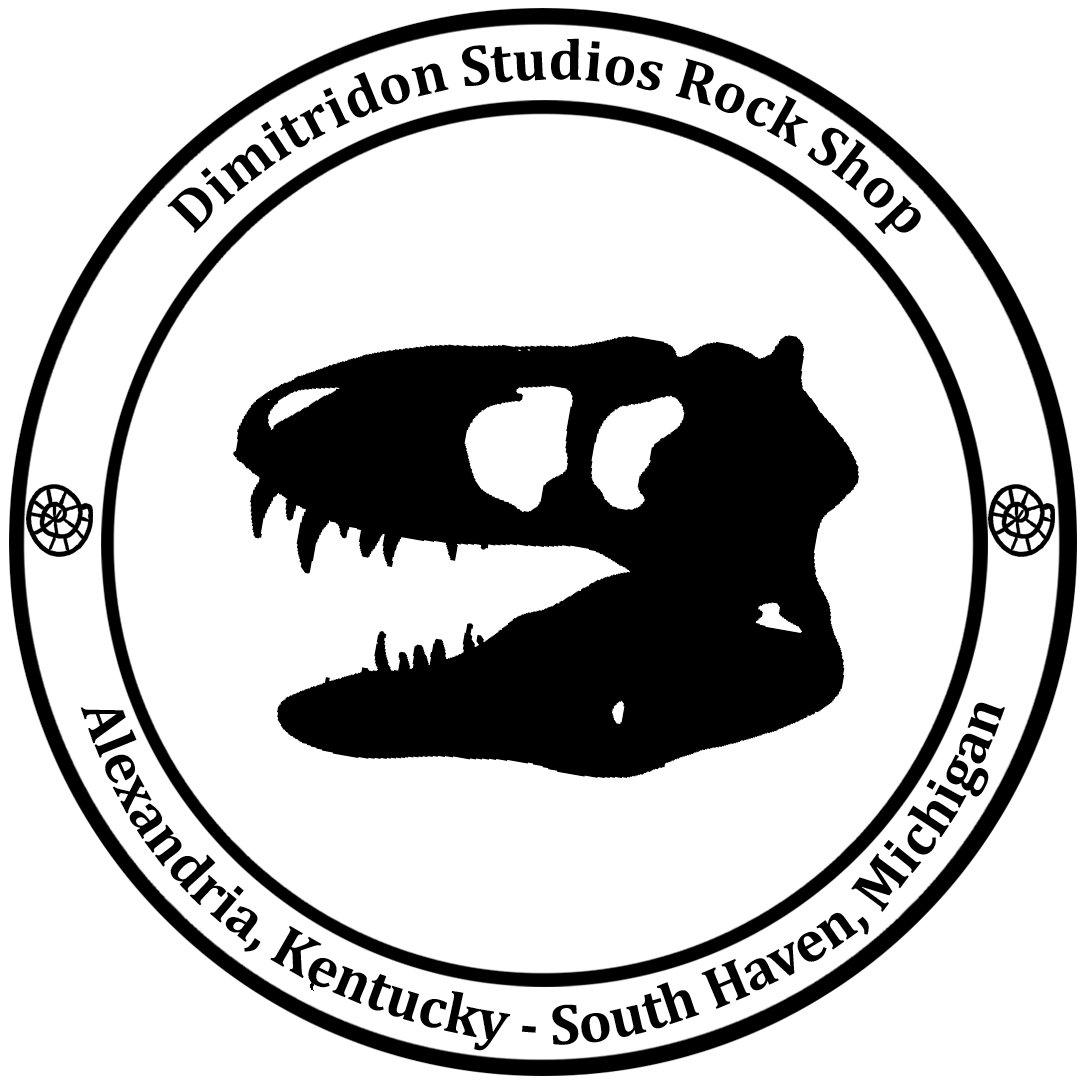
Rock of the Month January 2023
Garnet
I can't think of a better month for Garnet than this one, because garnet is the birthstone for the month of January! This stunning gemstone is often thought of as bright to dark red with high saturation and luster, but garnet can come in a wide variety of colors such as green, yellow, orange, pink, purple, brown, white, and black. Garnet very rarely has blue tones, one of the few limits of the variety of colors the stone comes in. Garnet comes in such a wide range of colors because the name “garnet” actually refers to a mineral group. Members of the garnet mineral group share the general formula of X+Y+2Si3O12 (X represents Ca, Fe2+, Mn, or Mg) (Y represents Al, Cr, or Fe3+). The listed X and Y substitutes are not the only possibilities but are by far the most common. The most common members of the garnet group are almandine Fe2+3Al2(SiO4)3, Pyrope Mg3Al2(SiO4)3, spessartine Mn2+3Al2(SiO4)3, andradite Ca3Fe3+2(SiO4)3, grossular Ca3Al2(SiO4)3, and uvarovite Ca3Cr2(SiO4)3 with almandine being the most common. While each of these group members share the same silicate base, the members can vary from each other in multiple ways. Almandine, pyrope, and spessartine have a maximum hardness of 7½ while andradite, grossular, and uvarovite have a maximum of 7. There is a four way tie for softest garnet between spessartine, andradite, grossular, and uvarovite, and the non-aluminum garnets tend to be more green and yellow in color.
A Sample of Green Uvarovite
When garnet is used in jewelry the different minerals in the group often are given trade names depending on the color. A few examples are rhodolite which is an intermediary between pyrope and almandine, tsavorite which is a stunning green form of grossular and is also the rarest of the gem garnets, hessonite which is another form of grossular that can be orange to brown, and demantoid garnet which is a green, high luster variant of andradite, and there are even more varieties than the ones that are listed above.
Tsavorite is a rare gemstone that is highly valued; a 325 carat stone was recently appraised at over 2 million dollars! Another massive garnet named the subway garnet was found underground at West 35th Street between Broadway and 7th Avenue. The name is a misnomer as the garnet was discovered during an excavation to install sewer pipes in 1885. This almandine garnet measures 15 inches in diameter and weighs 9 pounds and 10 ounces. The reddish brown stone soon found its way to a mineral store display window where it was priced at $100 ($3069 in 2022). The mineral was purchased the next day by George F. Kunz. The largest documented garnet was discovered in Norway measuring over 7.5feet and weighing 38.5 tons. It is believed to have been broken down for industrial use.
Garnets often form when sedimentary rock with high aluminum content undergoes metamorphosis. Shale is a prime example of a good starting material, oftentimes resulting in schists or gneiss after sufficient heat and pressure have been applied. Garnet is usually found near the surface but can be found deeper underground. Garnet is also seen in sedimentary rocks. The hardness of this mineral group makes it difficult to weather, leading to the minerals of this group becoming an inclusion or clast. Here is a Pressure - Temperature diagram illustrating Garnet (red), Spinel (green), and diamond (white) formation in a Cr free model mantle.
Figure 1. Phase diagrams of the modeled Cr free mantle displaying changes in mineral formation due to differences in temperature (oC), pressure (kb kilobar) , and mantle composition. (O'Neill, 1981; Klemme and O'Neill, 2000a,b)
Figure 2. A ball and stick model of almandine Fe2+3Al2(SiO4)3 viewed from the x axis.
Figure 3. A ball and stick model of almandine Fe2+3Al2(SiO4)3 viewed at an angle.
Garnet group members form under high pressure and temperature as seen in figure 1. These formation conditions result in a mineral with a more compacted crystal structure. This more compact structure yields a high density and generally harder minerals, lending the mineral to have positive qualities for jewelry and industrial application.
Minerals in the garnet group can be found all over the world, with famous localities on most contents. The United states has multiple famous locations in states all across the country such as Arizona, New York, and North Carolina. World renown garnets have come out of Carboneri Italy, Outokumpu Finland, Gaisberg Valley Austria, Kohse mine Japan. Carboneri Italy is famous for high quality large plate specimens of well defined orange grossular. Outokumpu Finland produced some of the best specimens of uvarovite, the specimens having a variety of host rock and minerals such as sphalerite and chalcopyrite complimenting the rich greens of this garnet member. Kohse mine Japan is home to incredible iridescent andradite named rainbow garnet, the optical effect is caused by thin growth layers in the crystal bouncing light. Gaisberg valley Austria produced massive dark red to red brown almandine samples, Some cluster samples reaching over 20cm.
Rainbow Garnet Courtesy of: https://commons.wikimedia.org/wiki/File:Rainbow_Andradite_Crystal.jpg
A few fun facts about garnet. The name garnet comes from the Latin word granatus, which means pomegranate. The garnet group is a member of the garnet supergroup which also contains vandanates. Carbuncle was another name for garnet that was used through the middle ages and earlier. Red garnet necklaces have been found in egypt dating back to roughly 5000 years old.










